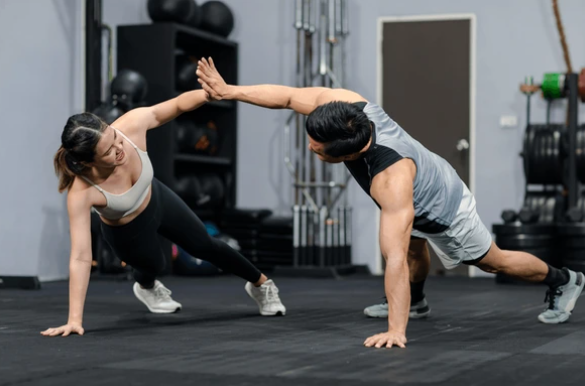Advanced Plank Variations for Core Strength
Core strength is a crucial component of overall fitness. It plays a vital role in everyday movements and athletic performance. One of the best exercises to develop core strength is the plank. Planks are a foundational exercise that targets multiple muscles, including the abdominals, back, and shoulders. While traditional planks are effective, advanced plank exercises can take your core strength to the next level. These variations offer enhanced benefits like improved core stability, balance, and overall strength. Let's explore how you can incorporate these exercises into your routine to achieve a stronger core.
What is Core Strength?

Core Strength refers to the ability of your core muscles to support your spine and keep your body stable during movement. These muscles include the abdominals, obliques, lower back, and hips. A strong core is essential for maintaining proper posture, reducing the risk of injury, and enhancing athletic performance. It also aids in everyday activities such as lifting, bending, and twisting.
Basic Plank Fundamentals
The traditional plank is a static exercise where you hold your body in a straight line, supported by your forearms and toes. This exercise is effective for building Core Strength Planks.

It engages multiple muscle groups simultaneously. By maintaining proper form, you can maximize the benefits of this simple yet challenging exercise.
Why Advance Your Plank Routine?
Incorporating Advanced Plank Exercises in to your workout routine can prevent plateaus and keep your workouts challenging.

As your core becomes stronger, basic planks may no longer provide the same level of difficulty. Advanced Plank variations introduce new challenges, engaging your muscles in different ways and promoting continuous improvement.
How To Do It?

Side Plank Variations
Side planks are excellent for targeting the oblique muscles, which run along the sides of your abdomen.
One effective variation is the side plank with leg lift. To perform this exercise, start in a side plank position and lift your top leg as high as you can while maintaining balance.
This variation not only strengthens the obliques but also enhances hip stability and balance.
Forearm Plank Variations
Forearm planks are a great way to increase the intensity of your plank routine.
One popular variation is the forearm plank with arm reach. Begin in a forearm plank position and extend one arm forward, keeping your body stable.
This exercise challenges your balance and engages your core muscles more intensely, offering significant benefits for Plank Variations Core.
Dynamic Plank Variations
Dynamic plank exercises incorporate movement, making them more challenging and effective.
Plank jacks, for example, involve jumping your feet apart and back together while maintaining a plank position.
Another dynamic variation is the plank to push-up, where you transition from a forearm plank to a full push-up position and back.
These exercises increase your heart rate and build endurance while strengthening your core.
Get ready to push yourself with these plank challenge variations. From plank jacks to side plank dips, these exercises will target different muscle groups and keep your core engaged throughout the entire routine. Are you up for the challenge?
Plank Challenge Variations
A plank challenge variations is a great way to progressively build core strength. Start with a 30-day challenge where you gradually increase the duration and intensity of your planks.
Begin with basic planks and incorporate advanced variations as you progress. This approach ensures steady improvement and keeps your workouts exciting.
30-Day Plank Challenge

Incorporating Plank Variations into Challenges
To maximize the benefits of a plank challenge, integrate different plank types into your routine. Include side planks, forearm planks, and dynamic planks to target all core muscles. This variety prevents monotony and ensures comprehensive core development.
Set Your Goals
Set achievable goals and celebrate milestones to maintain enthusiasm and dedication throughout the challenge.
Keep a journal to record the duration and types of planks you perform each day.
Measuring your progress is essential for staying motivated.
How to Breathe ?
Controlled breathing and core engagement are key to enhancing plank effectiveness.
Inhale deeply through your nose and exhale through your mouth, maintaining a steady rhythm.
Focus on engaging your core muscles throughout the exercise to ensure they are actively working.

Common Mistakes and How to Avoid Them
Some common mistakes include holding your breath, letting your hips drop, and not engaging your core. To avoid these errors, concentrate on your form and maintain awareness of your body position. If you feel your form slipping, take a break and reset.
How i make a Balanced Plank Workout?

